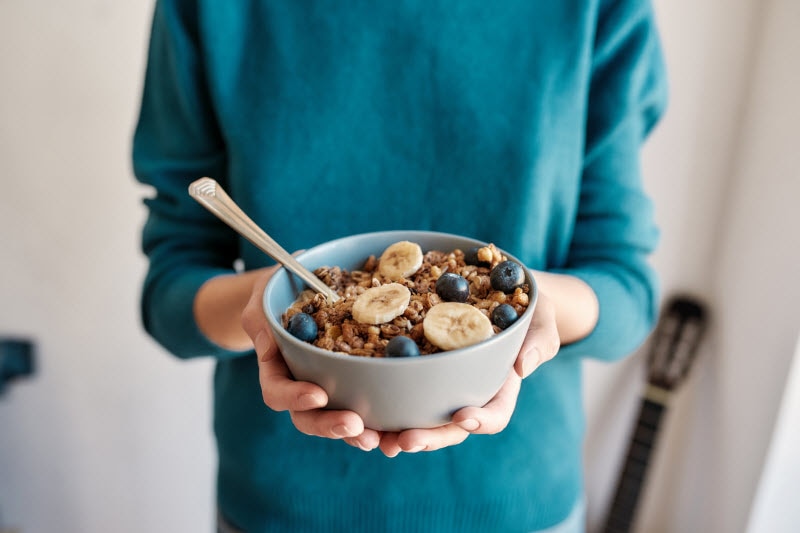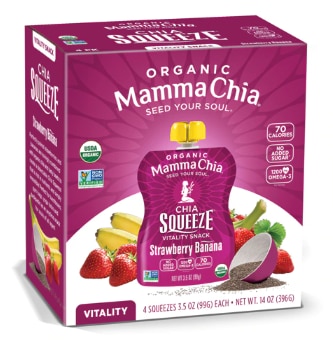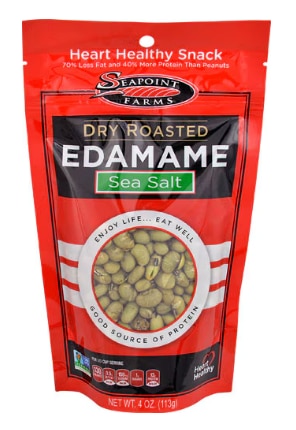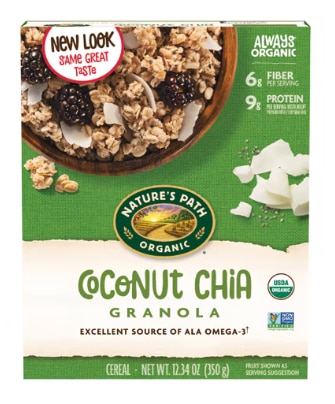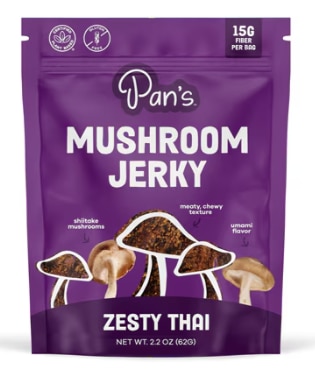Move over, protein…it’s time for fiber to take center stage. That’s what the latest viral social media trend ‘fibermaxxing’ is all about—making dietary fiber the star of your diet. The premise is to choose your foods wisely to make sure you’re meeting or exceeding your fiber goals.
For ages, protein has been one of the most buzzing nutrients. Some people have gone so far as to aim for 100 grams or more of the muscle-building nutrient per day. However, the tide may be turning in fiber’s favor. Why the sudden change? It turns out that most Americans meet or exceed their protein needs, but up to 95% of Americans don’t get enough fiber.
As well meaning as social media users may be, we want to uncover more about this trend from real nutrition experts. So, we spoke to two registered dietitians on all things ‘fibermaxxing.’ Here’s what they want you to know and some tasty ways to hit your fiber goals.
What Is ‘Fibermaxxing’ exactly?
‘Fibermaxxing’ is a coin termed by social media creators in reference to meeting or exceeding one’s daily requirements for dietary fiber. It’s not an official term, so there aren’t any hard-and-fast rules. The goal is to add fiber-rich foods to your diet, preferably through whole or minimally processed foods, says Jenna Volpe, RDN, a gut health dietitian in Austin, Texas
If you’re already mindful of your fiber intake, does that mean you’ve been fibermaxxing before it was a trend? Probably. The concept isn’t new, but the Gen Z-style term is. Rebranding the importance of fiber isn’t necessarily a bad thing just because it’s gaining popularity. If anything, the effects of this trend are positive overall because it’s spotlighting a much needed yet often overlooked nutrient, says Kara Landau, RD, a gut health dietitian in Brooklyn, New York.
This trend could fill nutrient gaps
The Standard American Diet isn’t exactly rich in fiber, so if this trend gets people eating more of it, dietitians can get behind it: “I’m glad more people are finally paying attention to this element of nutrition and health,” Volpe says. “Fibermaxxing is certainly bringing attention to this nutrient gap and providing a heightened awareness to the importance of fiber-rich daily meals,” Landau says.
How much fiber does one really need in a day? It depends on your age and sex. According to the 2020–2025 U.S. Dietary Guidelines for Americans, women need 22–28 grams daily and men need 28–34 grams daily. In reality, Americans are getting a fraction of that. The average American gets roughly 10–15 grams of fiber per day.
So, all this talk about fibermaxxing could inspire some people to make some meaningful changes.
The known benefits of fiber
Why should you care about adequate fiber intake? For starters, fiber is commonly associated with helping digestion. “Fiber is most well-known for promoting regularity,” Volpe says. There’s a known correlation between fiber intake and constipation relief. There’s also evidence suggesting that fiber intake may help lower the risk of colorectal cancer, though more research is needed.
The potential perks of eating more fiber extend well beyond your gut health. “For most people, getting enough fiber from whole, nutrient-dense plant foods like fruits, veggies, and whole grains has always been fundamental to virtually every facet of health,” Volpe says. “It also aids in appetite regulation, blood sugar balance, and more.”
There’s research to back this up—and then some. Fiber is also beneficial for cardiovascular health as it can reduce cholesterol and heart disease risk. What’s more, fiber may have metabolic benefits. Fiber intake may help lower body weight and improve insulin response, which is crucial for managing type 2 diabetes, research suggests.
However, fiber isn’t just a trend
By now, many of us are aware that social media isn’t always a reliable source of information. This is no exception. While some good may come of fibermaxxing, trends aren’t the ideal way to determine your diet. Fiber was foundational to overall health long before it was trendy, Volpe says.
Regardless of what’s trending, you should always aim to eat plenty of fiber-foods rich, Volpe says. These typically include plant-based foods, such as:
- Fruits: Avocado, raspberries, blackberries, kiwifruit
- Vegetables: Butternut squash, kale, broccoli, carrots
- Whole Grains: Barley, quinoa, oats, brown rice
- Legumes: White beans, green peas, lentils, kidney beans
- Nuts: Almonds, pistachios, pine nuts, pecans
- Seeds: Chia seeds, flax seeds, pumpkin seeds, sesame seeds
Dietitians also remind us that nutrition is often individualized. Not everyone can or should drastically increase their fiber intake, Landau says. She recommends consulting a practitioner, such as a registered dietitian, for personalized nutrition advice.
7 snacks to increase fiber intake
Statistically, most Americans struggle to eat enough fiber. Many of us know that fiber is found in plant-based foods, but making them a mainstay in one’s diet can take some getting used to. If you want to give fibermaxxing a try, here are some high-fiber snacks to help you out. Each one provides a minimum of 4 grams of fiber per serving.
Mamma Chia Organic Chia Squeeze Vitality Snack
If you’re new to chia seeds, these chia squeeze pouches are a great way to introduce them to your diet. “Chia squeezes can be a great way to leverage the benefits of fiber from chia seeds,” Volpe explains. “They’re ready-made and sweetened naturally with fruit extracts, so chia squeezes offer convenience and flavor.” Each pouch offers 4 grams of fiber.
Seapoint Farms Dry Roasted Edamame
Legumes are another excellent source of fiber. Plus, they’re high in protein. This roasted edamame is a convenient and tasty way to eat more legumes. Each serving provides a whopping 8 grams of fiber and 13 grams of protein.
Flackers Multi Seed Plant Based Organic Crackers
Flackers are crackers made with flax seeds, sunflower kernels, pepitas, chia seeds, and hemp seeds. So, if you’ve been looking for a way to incorporate more seeds into your diet, look no further. These crackers provide 6 grams of fiber per serving. Dip them into hummus for even more fiber.
Nature’s Path Organic Chia Granola Cereal
You can enjoy this versatile cereal with milk or as a topping on yogurt. Made with whole grains and chia seeds, each serving offers 6 grams of fiber. Add berries for a bigger fiber boost.
Beanitos White Bean Tortilla Chips
High-fiber tortilla chips? These chips prove it’s possible. They’re made from white beans, providing 4 grams of fiber per crunchy serving. Pair them with a homemade bean dip for even more fiber.
Pan’s Mushroom Jerky
Regular beef jerky is high in protein, but here’s a high-fiber option that’s also lower in sodium. Made from shiitake mushrooms, each serving of this plant-based jerky provides 7 grams of fiber.
Rind Snacks Skin-On Dried Fruit
Fresh fruit is high in fiber, but so is dried fruit. This mixture of dried fruits stands out because it contains no added sugar and each fruit has the rind on, which is often discarded but provides plenty of fiber. Snack on these for a quick 6 grams of fiber.
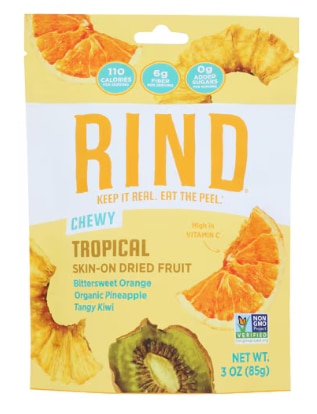
†These statements have not been approved by the Food and Drug Administration. These products are not intended to diagnose, treat, cure or prevent disease.
The post What’s All This Fuss About ‘Fibermaxxing’? Dietitians Weigh in on the Trend first appeared on The Upside by Vitacost.com.


